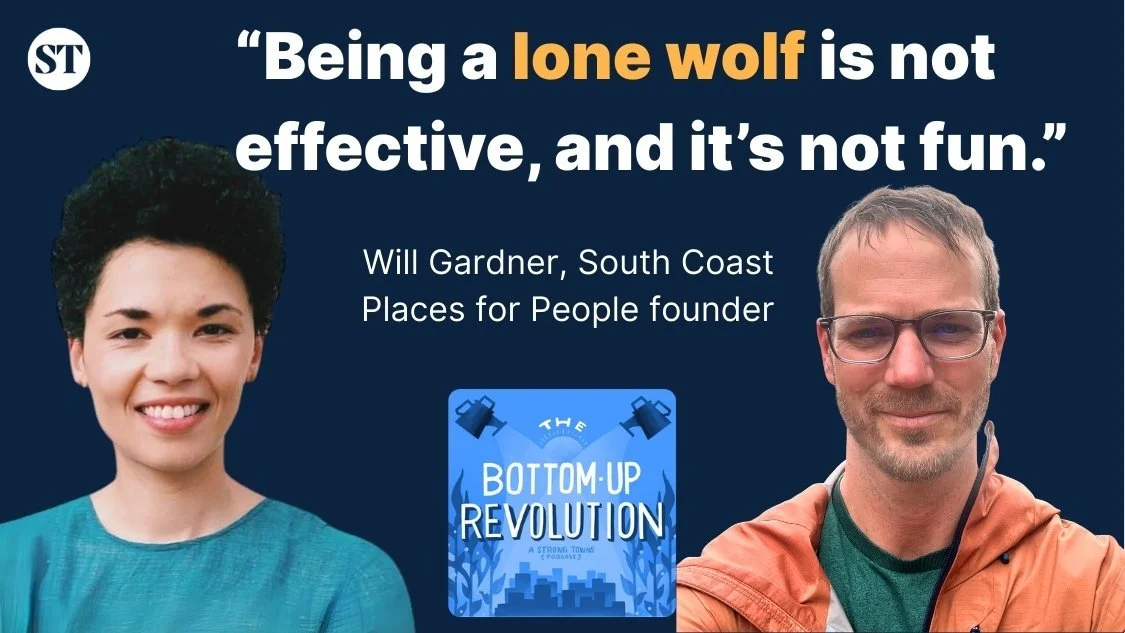Highway Expansions Aren’t a Thing of the Past—So How Do We Fight Them in 2023?
(Source: Unsplash/Brendan Beale.)
The post-WWII era was notorious for launching highway expansions across North America, but displacing businesses and severing communities in the name of more lanes is hardly a practice of the past.
Residents of Norman, Oklahoma, have been embroiled in a multi-year battle with the state’s turnpike authority regarding a highway expansion project that will cost $5 billion and is projected to displace nearly a thousand homes and endanger sensitive natural areas. The North Houston Highway Improvement Project in Houston, Texas, has leveled transit-oriented housing in the city’s revitalized downtown amidst displacing hundreds of lower-income residents. The NHHIP is projected to cost nearly $10 billion.
Family businesses that are just beginning to bounce back from pandemic precarity in Sylva, North Carolina, face demolition as the state advances the expansion of N.C. 107. That project costs upwards of $30 million. A highway has haunted Shreveport, Louisiana, for decades, draining the communities it threatens to bisect of investment as developers, business owners, and residents alike await bulldozers. That “zombie project” comes with a $650 million bill.
With how much resources are poured into advancing these projects, freeway fighters will be the first to concede that the battle is hard, the playing field uneven, and the likelihood of victory low. Nevertheless, every one of the aforementioned projects is being resisted by groups comprising school teachers, business owners, medical professionals, data scientists, artists, and, generally speaking, people who envision a different future for the place they call home.
Below are some tips Strong Towns has collected from freeway fighters across the country.
You Don’t Have To Do It All
For those who attended the Strong Towns 2023 National Gathering, the names Amy Stelly and Danielle Richard may sound familiar. These two Louisiana natives have been fighting freeways independently and as part of the Four Corners Coalition, 4CC, a statewide group challenging the development pattern that has not only characterized the last few decades, but has systematically divested neighborhoods of opportunity, wealth, and agency over their future.
One tip they shared during their panel at the Gathering (“How To Fight The Highway in Your Backyard”) was leveraging the skills and experiences already present in your group. In the case of the 4CC, Richard’s graphic design expertise distills dense, often numeric, information into a digestible visual format that’s not only proven useful when communicating with the general public, but also with city staffers and elected officials. Other members bring skills in data science, advocacy, copywriting, and so on.
Take Breaks or Else You’ll Burn Out
“At Stop TxDOT, we try hard to cultivate a culture of care,” Ally Smither of Stop TxDOT I-45 said in an interview regarding Houston’s highway expansion. “Otherwise we’ll burn out.”
Here, Smither was referring to setting and honoring boundaries when it comes to communications. She was protective of a prospective interviewee who had spent the last two weeks speaking to the press about TxDOT’s impact on her life: she not only lost her home, but was given little assistance in securing new accommodations.
Smither’s caution pointed to the reality that many freeway fighters become activists not by choice, but by circumstance. More often than not, they are individuals balancing entirely independent careers, hobbies, and struggles. These are people with families and roommates. The multi-million dollar projects they’re combatting likely uprooted much of what they’ve been building in recent years.
With project timelines spanning years—or even decades—taking the time to rest, and even detach, is key.
Make It Enjoyable
Freeway fighters are united by the shared goal of abolishing an incipient expansion project. The subject is grim and demoralizing, so integrating recreation, food, and fun into advocacy is a way to sustain morale.
In Denver, a local business improvement district (BID) drew attention to an interchange that took the lives of over 25 pedestrians and cyclists by shutting it down for a pop-up festival. The BID took over the southwest quadrant’s ramps in exchange for live music, food, and an opportunity for community members to vote on what they want to see happen to the interchange over the long-term.
“Having a fun event in the neighborhood—in the actual space—draws attention not only to the decision makers but also to the broader community so we can really boost how much influence we have and make a splash,” Anne Kuchenmeister, a local planner, told Streetsblog in 2018.
As impressive as the BID’s effort was, making time for fun doesn’t have to be so elaborate. For example, tactical urbanists in Denton Texas opt to duck into a drag show or bar after drawn-out council meetings. Activists in Houston host picnics and block parties that double as information sessions and rallies. Members of the 4CC make time during their routine Zoom calls to catch up on life, share what’s growing in the garden, and build friendships.
Challenging multimillion-dollar highway projects is daunting, but thousands of freeway fighters across the country can at least assure you that you’re not alone.
On September 28, you can join Strong Towns founder Chuck Marohn in conversation with Ally Smither and Susan Graham of Stop TxDOT I-45 as part of our annual Local-Motive Tour.
Stop TxDOT has been mobilizing opposition to TxDOT’s NHHIP, also known as the I-45 expansion project. The project has already displaced hundreds of people and dozens of businesses, threatening more as it progresses. With the nearby Katy Freeway already serving as the poster child for induced demand and Houstonians vying for a less auto-oriented future for their city, the NHHIP is a step in the wrong direction.
From the comfort of your favorite device, you can learn the tactics that have worked for Stop TxDOT.





When cities attempt to prescribe the exact way a building must be used, they risk regulating away the very life of a place.